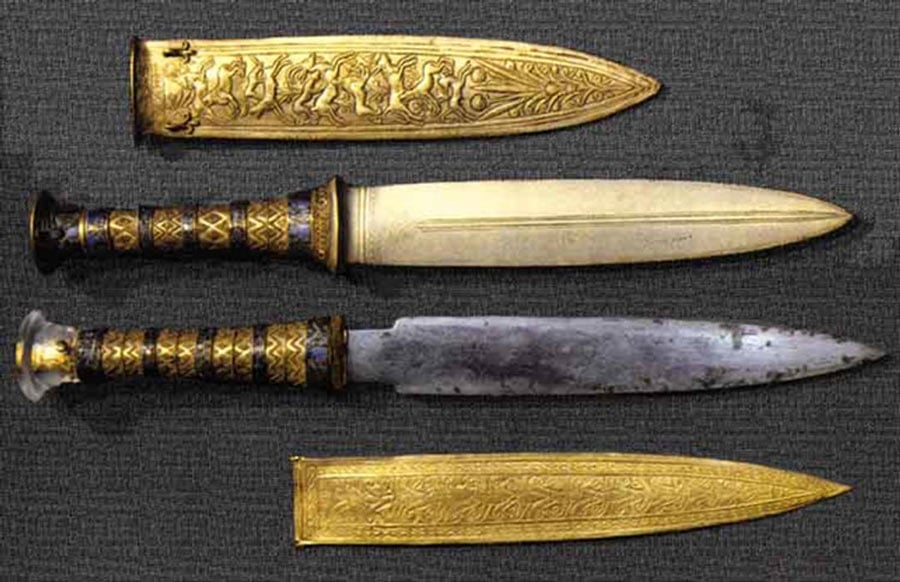Subject of many studies and investigations, Egyptian King Tut’s dagger has already been proven to have been made from meteorite iron. A recent study has now added a new dimension to exactly where this dagger came from, and how it was forged. The new study published in the journal Meteoritics and Planetary Science explores the possibilities of where and how King Tut’s dagger was made. And the answer may be that the iron meteorite dagger was a foreign gift, and that it was fashioned with advanced metallurgy understandings from distant lands.

King Tut’s dagger, made from meteorite iron, was analyzed in the latest study and revealed to have come from somewhere outside of Egypt. ( Meteoritics and Planetary Science )
King Tut’s Daggers: One of Gold and the other Meteorite Iron
Crown prince at the tender age of 9, King Tutankhamun (ruled 1332-1323 BC), died just a decade after ascending the throne, from a cause still being debated. His reign was relatively unremarkable, but he achieved historical significance for his grand burial tomb in the Valley of the Kings, which was uncovered in 1922.
King Tut’s tomb was found to contain 5,398 artifacts for his journey into the afterlife, including royal headgear, elaborate jewelry , musical instruments, and board games ! He also took two beautiful daggers with him, one made of gold, and the other of iron. It is the iron dagger that has attracted so much attention.

This dagger was made for Mughal emperor Jahangir from a meteorite that fell on India in 1621 and displays the unique Widmanstätten pattern common to beaten meteorite iron. (Daderot / CC0)
The New Study Reveals the Dagger was Not Egyptian Made
What puzzled archaeologists for a long time was that King Tut died during the Bronze Age. However, the iron dagger clearly showed evidence of advanced metallurgy , as it required knowledge of working with a metal that requires temperatures over 1,500 degrees Celsius (2732 degrees Fahrenheit) to forge.
Meteorite iron made sense over inaccessible iron deposits, keeping in mind that a 2017 study by Albert Jambon showed that all iron used during the Bronze Age was meteoric, but did King Tut’s generation of metal workers understand how to work with this material from the heavens?
Remarkably, the new study shows that the meteoric blade of King Tut’s dagger was not forged in Egypt. The study researchers subjected the blade to rigorous chemical analyses, which revealed that the techniques used in its construction were not known in Egypt at the time. This supports an earlier hypothesis that suggested that the blade was a gift to King Tut’s grandfather from abroad.
IFL Science reports that Japanese scientists from the Chiba University of Technology travelled to the Egyptian Archaeological Museum in Cairo, Egypt, in 2020, to fire x-rays at the ancient blade to get a better idea of the concentration of the various elements it contained.





Comments
Post a Comment